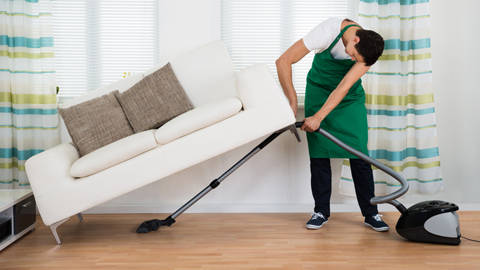Gender inequality in household tasks already present in adolescence

05/03/2019
A study conducted by the Centre for Demographic Studies of the Universitat Autònoma de Barcelona (CED-UAB), published in the journal Perspectives Demogràfiques, examines in detail the gender differences in the use of time within the context of Spain, based on the data found in the latest edition of the Use of Time Survey (conducted by the Instituto Nacional de Estadística in 2009-2010). The survey gathers information from the 19,295 interviewees who indicated the time dedicated to different activities throughout a 24 hour period. The study is entitled "La persistent desigualtat de gènere en l'ús del temps a Espanya" [The Persistent Gender Inequality in the Use of Time in Spain].
One of the main conclusions is that although there is a progressive increase in education level and access to the labour market among women, gender inequalitied found in the distribution of time persists and tends to increase with the arrival of children.
Authors of the study, UAB researchers Joan García and Marc Ajenjo analysed the time men and women, according to age and family situation, dedicated to four activities on a workday: paid work, household chores, caring for children and leisure.
Teenage girls dedicate half an hour more daily to household chores than teenage boys do. This difference increses to 45 minutes among women and men aged 18 to 29. In both cases, the gap represents more leisure time for the men.
Among young adults living alone, women dedicate one more hour to paid work and is the only time in their life cycle in which they work more than men. Taking into account the increase in time dedicated to household chores, the difference with men and leisure hours dedicated rises to two hours.
In young childless couples, women dedicate one more hour daily to chores. In contrast, they dedicate one more hour to paid work, and the leisure time is equal between the two.
Researchers observed a “traditionalisation” in behaviour patterns when children arrived. “As soon as they have children, we observe that women fall in the hours dedicated to paid work and there is an increase in both household tasks and childrearing”, explains one of the authors of the study Joan García.
As a whole, mothers dedicate 3.5 hours more to household chores and one hour more to childrearing when compared to men. Thus, although men dedicate 2.5 hours more to paid work, women are clearly behind in the amount of hours left for them.
Women with higher education level and income
In couples with children in which both work outside the home, the gender gap in household chores is calculated to be one hour and 45 minutes and forty minutes more in childrearing. Both figures are significantly lower than in those households in which only men work, where the gap rises to five and a half hours of household chores and more than two hours of childrearing for women.
However, there is a large difference depending on which of the members works outside the home and the time dedicated to household chores and childrearing reduces greatly when men stay at home.
When women have a higher education level than their partner the differences are less, but do not decrease to less than one hour 25 minutes, therefore very similar to that of couples in which both have at least a secondary education level.
At the other extreme, the greated differences can be seen when both partners have secondary education levels or less, reaching 2 hours and 20 minutes.
The most equitable situtation is found in partners with university studies and incomes higher than €2,000 per month, a condition fulfilled by approximately 6% of partners with two incomes and children. Even in these cases, and although a reduction in the difference is largely due to paid domestic help, women continue to be the ones dedicating 30 minutes more to household chores and 30 minutes more to caring for children.